The Virginia Range Wild Horses
The Virginia Range Wild Horses
By George Yates

Figure 1: The wild horses are aware of our presence but are mostly habituated to humans. [ghy]
The history of wild horses on the North American continent is replete with all the drama to be expected from any topic involving conflicting cultural, economic, and political interests. There is ongoing debate if the horses are indigenous or invasive; if they are wild or feral; indeed, if they should be completely eradicated. The good news is that the wild horses are currently protected by both federal and state laws.
Wild horses are defined by federal law as unbranded, unclaimed, free-roaming horses found on public lands in the United States. Today, the Bureau of Land Management (BLM) protects and manages wild horses in balance with other public resource values on 177 herd management areas across 26.9 million acres of public lands. The phrase ‘in balance with other public resource values’ in the previous sentence exposes the basic, to date, unresolved conflicts between wild horse advocates and ranching interests, among others. The BLM is in the midst of this political tug-of-war charged with the nearly impossible task of finding a universally accepted mustang management policy.
Spanish settlers likely first brought horses to the Americas in 1519, when Hernán Cortés arrived on the continent in Mexico. At this time, North America was widely covered with open grasslands, serving as a great habitat for these horses. The horses quickly adapted and spread across the nation. Around 1550, the first known feral horses escaped Mexico City, and more followed over time. Native Americans began to capture and ride the horses, spreading them further across the continent. The oral histories from Indigenous groups tell of interactions with horses prior to colonizers arriving in their homelands.
Although it has been over five centuries since the Spanish Mustangs return to North America, they are technically a non-native species and therefore the wild horse population is not indigenous. This is also true of cattle, sheep, and goats; however, desert bighorn sheep and mountain goats are indigenous.
So, in 2023 given the conflicting cultural, economic, and political interests there are heated debates involving the Bureau of Land Management (BLM), state and local governments, farmers, ranchers, land developers, and wild horse advocates involving the best use of the land and the control of the wild horse herds. Personally, I just like observing wildlife and taking their pictures.
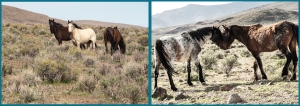
Figure 2: The left panel shows behavior I try to avoid photographing – a horse grazing, which is what they mostly do. The two watching me photograph them quickly lost interest when they determined that I was not a threat. The right panel shows greeting behavior. [ghy]
The history of the Wild Horses of the Virginia Range dates back to the 1800s. Over time, some of these horses were released or escaped from their owners and established wild herds. The Virginia Range Wild Horses are descendants of these horses.
In 1955, Reno resident Velma Johnston, better known as “Wild Horse Annie”, led a movement to protest the ruthless manner in which wild horses were being rounded up by the Nevada Department of Wildlife for commercial purposes. She lobbied state legislatures to stop rounding up Nevada’s wild horses on state land to sell to pet food manufacturers. Her movement led to the passing of the “Wild Horse Annie Act” in 1959. Today, these majestic animals are known as “Annie’s Horses”. In 1971 the federal government followed suit, further protecting these wild animals with the creation of the Wild Horse and Burro Protection Act of 1971, which provided legal protection to the Virginia Range herd.
Despite the legal protection and public support, these horses still face many challenges. One of the main concerns is the rapid population growth, which can lead to overgrazing and damage to the range. Another is the risks of collisions between the horses and vehicles on the roads that run through the range.
To mitigate these risks, several management strategies have been implemented, including controlling the population through fertility control and roundups, reducing the risk of vehicle collisions by installing fencing, and working with the residents to educate them about the importance of protecting the Wild Horses.
When in an unfamiliar area with limited time it is advisable to hire a local guide. Hiring a guide serves two purposes; they know where the horses are, and you save the wear and tear on your own vehicle. We hired Marty Wright to show us around in our quest to view and photograph the wild horses.
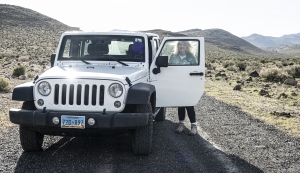
Figure 3: Tour Guide: Marty Wright – Wild Horses Carry Me Away.
Marty Wright (281) 546-4680 mustangmarty@icloud.com. [ghy]
We drove into a development and spotted a band of around a dozen horses meandering toward a house, so we ventured onto private property to observe their behavior. The homeowner came out to greet us and turned out to be very welcoming. Frank told me that he and his wife had lived here for about 25 years and really enjoyed the wild horses.
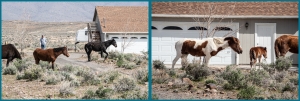
Figure 4: A small band of mustangs meandering in front of a home, completely ignoring the humans observing them. [ghy]
The behavior of wild horses at water troughs is fascinating and I have observed it on at least two other occasions. There was already a band lined up to drink from the trough, each horse patiently waiting its turn. The band we were following simply queued up at the end of the line.

Figure 5: Left panel – on the way to water. Right pane – waiting a turn. [ghy]
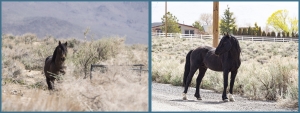
Figure 6: Left panel – exiled until he forms his own band. Right panel – stay away. [ghy]

Figure 7: The stallion drops, rolls, and prepares to stand. [ghy]

Figure 8: The stallion stands, shakes off the sand, and gallops across the field. [ghy]
Driving along the USA Parkway you get a sense of future development; hills are being leveled, mile after mile of active construction equipment building roads, and preparing additional infrastructure.

Figure 9: Tesla GigaFactory1 [Mar 2022]. The site is energy independent, with wind farm, solar, and geothermal sources. If fully built out, the building will have the largest footprint in the world. This factory will also manufacture a fully electric truck, Semi. [Internet image, Joshua Froschauer]
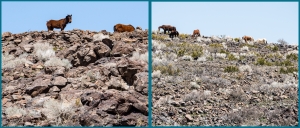
Figure 10: Horses grazing along a ridge line at Centennial Park. [ghy]

Figure 11: The fight lasted less than two minutes with much snorting and whinnying. [ghy]
The Wild Horses of the Virginia Range have a long and rich history, and they attract visitors from all over the world. They are a beautiful sight, and are thought of, by many, as a symbol of American heritage. Driving home, our final view of the mustangs was of a large group quietly grazing along the shore of Washoe Lake.
For additional information: The Wild Horse Preservation League and the Virginia Range Wildlife Protection Association are volunteer non-profit organizations dedicated to keeping Nevada’s mustangs and burros wild and free. For more information about them, visit https://greatnonprofits.org/org/wild-horse-preservation-league or https://vrwpa.com/.



Leave a Reply
Want to join the discussion?Feel free to contribute!